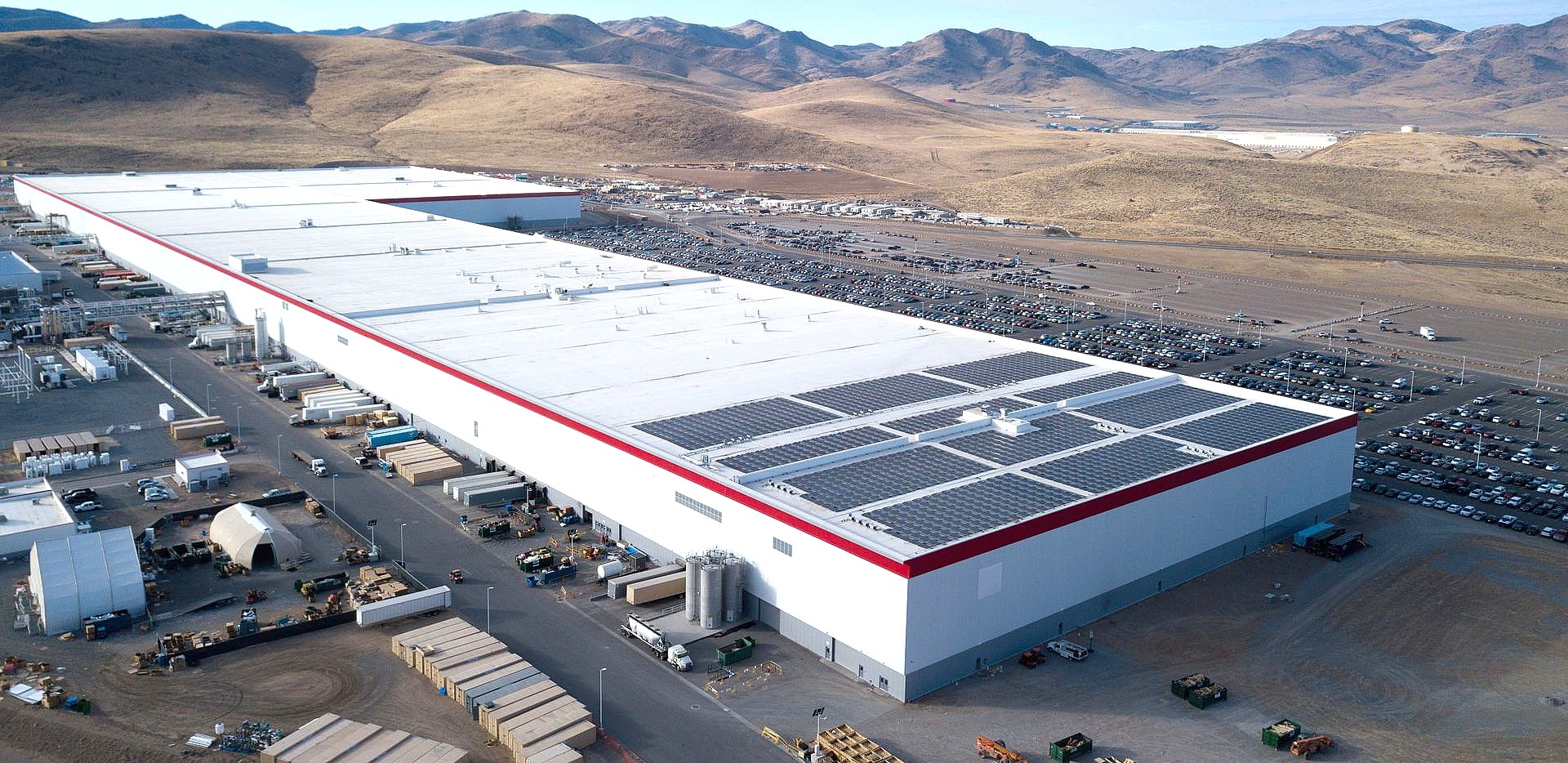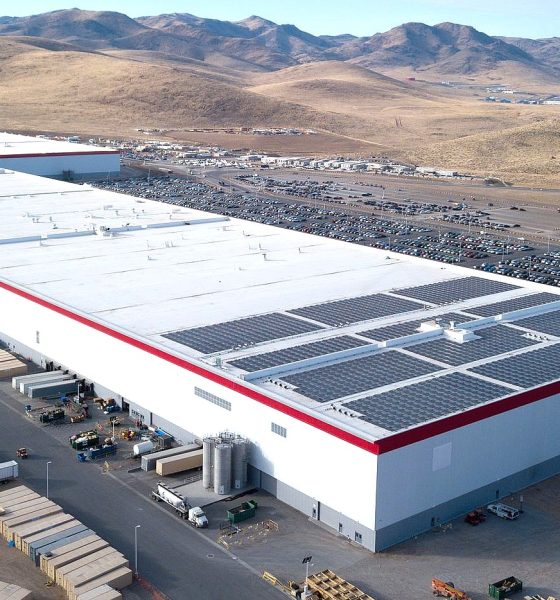

News
Tesla employee foregoes $1M payment, works with FBI to thwart cybersecurity attack
Sometimes, the events that transpire inside a company could be just as exciting and nail-biting as the most popular thrillers in fiction. In Tesla’s case, such a scenario recently played out, as a worker in Gigafactory Nevada ended up turning down a $1 million incentive, working closely with the FBI, and thwarting a planned cybersecurity attack against the electric car maker.
This Tuesday, the Department of Justice announced the arrest of Egor Igorevich Kriuchkov, a Russian citizen accused of conspiring to breach the network of a US company and introduce malware to compromise the said company’s networks. Media reports about the incident have identified the US company to be electric car maker Tesla. Interestingly enough, a criminal complaint filed by the FBI Las Vegas Field Office suggests that the attempted cybersecurity attack is no ordinary hacking attempt — it may very well be part of a well-financed, organized, scheme.
The plan begins
The remarkable story began when a Russian-speaking, non-US citizen working at Tesla’s Gigafactory Nevada was contacted by Kriuchkov. The employee, whose identity has not been revealed, has access to the electric car maker’s computer networks. On July 16, the Russian citizen contacted the Giga Nevada employee through WhatsApp asking to meet with him in Sparks, Nevada. As noted in a report from Clearance Jobs, the fact that Kriuchkov approached a Russian-speaking, non-US citizen working at Gigafactory Nevada suggests that the team behind the cyberattack attempt has done their research well.
The Tesla employee, some colleagues, and Kriuchkov met socially from August 1-3, which included a trip to Lake Tahoe. Interestingly enough, Kriuchkov reportedly declined to be present in any photos that were taken during the trip. At one point when the group was taking a photo during a picturesque sunset, Kriuchkov reportedly remarked that he would “just remember the beauty of the sunset and did not need a photograph.” After the relatively harmless Lake Tahoe trip, the Russian citizen asked the Tesla employee to meet with him for some “business.”
Down to “business”
During their “business” meeting, Kriuchkov revealed his hand. The plan involved the Tesla employee inserting malware provided by Kriuchkov and his associates to the electric car maker’s systems. After the malware is inserted, a distributed denial of service (DDoS) attack would occur that could allow the hackers to occupy the Tesla information security team. The malware would also allow the hackers to extract corporate and network data, which would be held ransom until the electric car maker pays up. For his participation in the ploy, the Gigafactory Nevada employee would receive $500,000, later raised to $1 million, to be paid in cash or bitcoin.
Unfortunately for Kriuchkov and his team, the Giga Nevada employee actually reported the planned cybersecurity attack to Tesla, which, in turn, contacted the FBI. The FBI stepped in, and with the agency’s help, the Tesla employee continued to communicate with Kriuchkov, trying to get as much information as possible about the hackers’ processes, procedures, and infrastructure. The efforts proved fruitful. In one conversation, the hacker reportedly boasted that his team had recently received a ransom worth over $4 million from a high profile company. Later reports would reveal that the company in question was CWT Travel, which reportedly paid a ransom of $4.5 million.
The plan falls through
During a meeting on August 19, the Tesla employee, wearing a wire from the FBI, met with Kriuchkov. The hacker agreed to pay an advance of $11,000 to the Giga Nevada worker. Two days later, on August 21, the Tesla employee was contacted by the hacker once more, who stated that the project was being “delayed” and all payments relating to the plan would not be transferred until a later date. Kriuchkov also informed the Tesla employee that he was leaving the area the following day. Behind the scenes, the FBI was able to get in touch with the hacker, who, in turn, drove overnight from Reno, Nevada to Los Angeles in what appeared to be an attempt to flee the United States.
Kriuchkov was unsuccessful, as he was arrested on August 22, 2020 in Los Angeles. The hacker is currently being detained pending trial. Fortunately for Tesla, the company was able to get away from what could have been a serious cybersecurity attack, and it has one employee to thank for it. It takes a lot, after all, to say no to a $1 million reward, as others have compromised far more for far less.
Read the FBI’s complaint against Kriuchkov below.
Complaint Egor Kriuchkov 3 20 Mj 83-0-0 by Simon Alvarez on Scribd

News
Tesla (TSLA) receives “Buy” rating and $551 PT from Canaccord Genuity
He also maintained a “Buy” rating for TSLA stock over the company’s improving long-term outlook, which is driven by autonomy and robotics.

Canaccord Genuity analyst George Gianarikas raised his Tesla (NASDAQ:TSLA) price target from $482 to $551. He also maintained a “Buy” rating for TSLA stock over the company’s improving long-term outlook, which is driven by autonomy and robotics.
The analyst’s updated note
Gianarikas lowered his 4Q25 delivery estimates but pointed to several positive factors in the Tesla story. He noted that EV adoption in emerging markets is gaining pace, and progress in FSD and the Robotaxi rollout in 2026 represent major upside drivers. Further progress in the Optimus program next year could also add more momentum for the electric vehicle maker.
“Overall, yes, 4Q25 delivery expectations are being revised lower. However, the reset in the US EV market is laying the groundwork for a more durable and attractive long-term demand environment.
“At the same time, EV penetration in emerging markets is accelerating, reinforcing Tesla’s potential multi‑year growth runway beyond the US. Global progress in FSD and the anticipated rollout of a larger robotaxi fleet in 2026 are increasingly important components of the Tesla equity story and could provide sentiment tailwinds,” the analyst wrote.
Tesla’s busy 2026
The upcoming year would be a busy one for Tesla, considering the company’s plans and targets. The autonomous two-seat Cybercab has been confirmed to start production sometime in Q2 2026, as per Elon Musk during the 2025 Annual Shareholder Meeting.
Apart from this, Tesla is also expected to unveil the next-generation Roadster on April 1, 2026. Tesla is also expected to start high-volume production of the Tesla Semi in Nevada next year.
Apart from vehicle launches, Tesla has expressed its intentions to significantly ramp the rollout of FSD to several regions worldwide, such as Europe. Plans are also underway to launch more Robotaxi networks in several more key areas across the United States.
News
Waymo sues Santa Monica over order to halt overnight charging sessions
In its complaint, Waymo argued that its self-driving cars’ operations do not constitute a public nuisance, and compliance with the city’s order would cause the company irreparable harm.

Waymo has filed a lawsuit against the City of Santa Monica in Los Angeles County Superior Court, seeking to block an order that requires the company to cease overnight charging at two facilities.
In its complaint, Waymo argued that its self-driving cars’ operations do not constitute a public nuisance, and compliance with the city’s order would cause the company irreparable harm.
Nuisance claims
As noted in a report from the Los Angeles Times, Waymo’s two charging sites at Euclid Street and Broadway have operated for about a year, supporting the company’s growing fleet with round-the-clock activity. Unfortunately, this has also resulted in residents in the area reportedly being unable to sleep due to incessant beeping from self-driving taxis that are moving in and out of the charging stations around the clock.
Frustrated residents have protested against the Waymos by blocking the vehicles’ paths, placing cones, and “stacking” cars to create backups. This has also resulted in multiple calls to the police.
Last month, the city issued an order to Waymo and its charging partner, Voltera, to cease overnight operations at the charging locations, stating that the self-driving vehicles’ activities at night were a public nuisance. A December 15 meeting yielded no agreement on mitigations like software rerouting. Waymo proposed changes, but the city reportedly insisted that nothing would satisfy the irate residents.
“We are disappointed that the City has chosen an adversarial path over a collaborative one. The City’s position has been to insist that no actions taken or proposed by Waymo would satisfy the complaining neighbors and therefore must be deemed insufficient,” a Waymo spokesperson stated.
Waymo pushes back
In its legal complaint, Waymo stated that its “activities at the Broadway Facilities do not constitute a public nuisance.” The company also noted that it “faces imminent and irreparable harm to its operations, employees, and customers” from the city’s order. The suit also stated that the city was fully aware that the Voltera charging sites would be operating around the clock to support Waymo’s self-driving taxis.
The company highlighted over one million trips in Santa Monica since launch, with more than 50,000 rides starting or ending there in November alone. Waymo also criticized the city for adopting a contentious strategy against businesses.
“The City of Santa Monica’s recent actions are inconsistent with its stated goal of attracting investment. At a time when the City faces a serious fiscal crisis, officials are choosing to obstruct properly permitted investment rather than fostering a ‘ready for business’ environment,” Waymo stated.
News
Tesla FSD v14.2.2 is getting rave reviews from drivers
So far, early testers have reported buttery-smooth drives with confident performance, even at night or on twisty roads.

Tesla Full Self-Driving (Supervised) v14.2.2 is receiving positive reviews from owners, with several drivers praising the build’s lack of hesitation during lane changes and its smoother decision-making, among others.
The update, which started rolling out on Monday, also adds features like dynamic arrival pin adjustment. So far, early testers have reported buttery-smooth drives with confident performance, even at night or on twisty roads.
Owners highlight major improvements
Longtime Tesla owner and FSD user @BLKMDL3 shared a detailed 10-hour impression of FSD v14.2.2, noting that the system exhibited “zero lane change hesitation” and “extremely refined” lane choices. He praised Mad Max mode’s performance, stellar parking in locations including ticket dispensers, and impressive canyon runs even in dark conditions.
Fellow FSD user Dan Burkland reported an hour of FSD v14.2.2’s nighttime driving with “zero hesitations” and “buttery smooth” confidence reminiscent of Robotaxi rides in areas such as Austin, Texas. Veteran FSD user Whole Mars Catalog also demonstrated voice navigation via Grok, while Tesla owner Devin Olsen completed a nearly two-hour drive with FSD v14.2.2 in heavy traffic and rain with strong performance.
Closer to unsupervised
FSD has been receiving rave reviews, even from Tesla’s competitors. Xpeng CEO He Xiaopeng, for one, offered fresh praise for FSD v14.2 after visiting Silicon Valley. Following extended test drives of Tesla vehicles running the latest FSD software, He stated that the system has made major strides, reinforcing his view that Tesla’s approach to autonomy is indeed the proper path towards autonomy.
According to He, Tesla’s FSD has evolved from a smooth Level 2 advanced driver assistance system into what he described as a “near-Level 4” experience in terms of capabilities. While acknowledging that areas of improvement are still present, the Xpeng CEO stated that FSD’s current iteration significantly surpasses last year’s capabilities. He also reiterated his belief that Tesla’s strategy of using the same autonomous software and hardware architecture across private vehicles and robotaxis is the right long-term approach, as it would allow users to bypass intermediate autonomy stages and move closer to Level 4 functionality.








